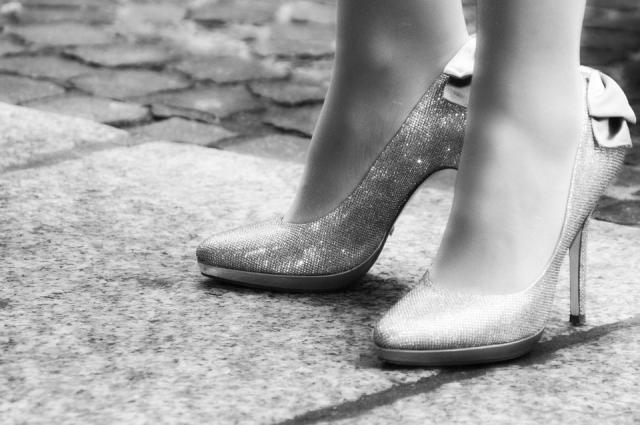High Heels
 High Heels are also very common in the workplace. Women who wear high-heeled shoes 8 hours a day, for 5 days a week, are most likely to encounter injuries or problems with their feet, ankles, and even the legs. However fashionable they may be, they also place a lot of pressure on the top front of the foot. They are also typically very narrow where the toes slide in, which can cause toe injuries, bunions, calluses, and even deformities in the toes. Finally, there is little to no ankle support with high-heels, and this instability can lead to sprains and other injuries in the area. Even simply removing the shoe at the end of the day, can lead to stretching of the Achilles tendon. A better alternative for high-heels, are simply heels that are not so high, or shoes that provide higher support on the ankles. Wearing heeled boots, or lower-heeled shoes that lace up or have a closure over the top of your foot can help to reduce some of the pressure on your feet. High-heels with more room in the toe area, will decrease your chances of developing corns, calluses, or bunions. Heels that have a larger heel base are also optimal, and will provide more stability when walking. A good pair of gel inserts might also go a long way. However, wearing very high heels with narrow tips will inevitably lead to discomfort, pain, and possibly injury, no matter how comfortable your inserts are. One way to decrease foot pain while still dressing fashionably for work is to find low-heeled shoes that are also cute and stylish. You could also reduce your wearing of heels to one or two days a week, alternating with flat shoes to give your feet a break. Some women even go so far as to only wear high-heels to important meetings and events—carrying an extra pair of comfortable walking shoes in your work bag can also provide relief after a long day in heels.
High Heels are also very common in the workplace. Women who wear high-heeled shoes 8 hours a day, for 5 days a week, are most likely to encounter injuries or problems with their feet, ankles, and even the legs. However fashionable they may be, they also place a lot of pressure on the top front of the foot. They are also typically very narrow where the toes slide in, which can cause toe injuries, bunions, calluses, and even deformities in the toes. Finally, there is little to no ankle support with high-heels, and this instability can lead to sprains and other injuries in the area. Even simply removing the shoe at the end of the day, can lead to stretching of the Achilles tendon. A better alternative for high-heels, are simply heels that are not so high, or shoes that provide higher support on the ankles. Wearing heeled boots, or lower-heeled shoes that lace up or have a closure over the top of your foot can help to reduce some of the pressure on your feet. High-heels with more room in the toe area, will decrease your chances of developing corns, calluses, or bunions. Heels that have a larger heel base are also optimal, and will provide more stability when walking. A good pair of gel inserts might also go a long way. However, wearing very high heels with narrow tips will inevitably lead to discomfort, pain, and possibly injury, no matter how comfortable your inserts are. One way to decrease foot pain while still dressing fashionably for work is to find low-heeled shoes that are also cute and stylish. You could also reduce your wearing of heels to one or two days a week, alternating with flat shoes to give your feet a break. Some women even go so far as to only wear high-heels to important meetings and events—carrying an extra pair of comfortable walking shoes in your work bag can also provide relief after a long day in heels.

